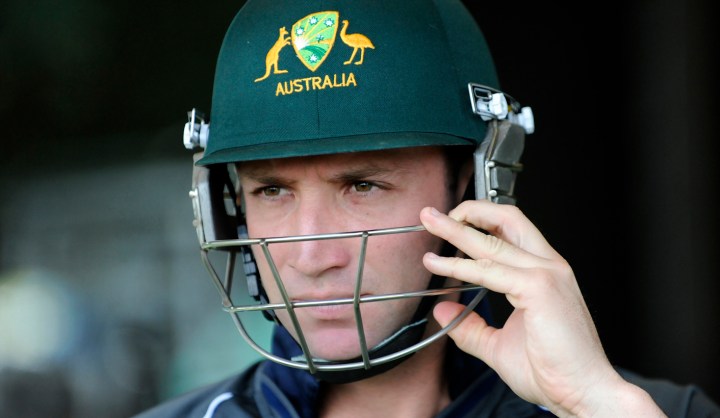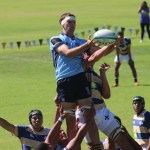Sport
Phil Hughes: The tragic reality of life’s frailty

Sport, they say, mirrors life. Rarely, though, does it mirror the grim realities that force us to take time to examine our own frailties. Phil Hughes, whose life was ended doing what he loved most, forces introspection of just how fragile life can be. By ANTOINETTE MULLER.
It’s not a story you expect to hear in this day and age. As cricket has evolved, so too has the protective gear batsmen wear. When players get hit, they almost always get up. If not immediately, usually a short while later.
Earlier in the year, South Africa’s Ryan McLaren suffered a concussion after being hit on the head during a Test against Australia. He was in pain, but got up. Two weeks ago, Pakistan’s Ahmed Shezad suffered a minor skull fracture after being hit on the helmet by Corey Anderson. The pain was evident, but he got up. Last week, Aussie batsman Ben Rorher was hit on the head by Chris Tremain. He fell to the ground, but he got up. They all got up. Phil Hughes was not so lucky.
After being hit on the neck by a bouncer from Sean Abbott, Hughes stumbled forward a few steps, put his hands on his knees and fell straight into the ground. His heart stopped. He had to be resuscitated on the pitch. He never got up again and died just a few days before his 26th birthday.
“Phillip took the blow at the side of the neck and as a result of that blow his vertebral artery, one of the main arteries leading to the brain, was compressed by the ball,” explained Dr. Peter Brukner, the Cricket Australia doctor. “That caused the artery to split and for bleeding to go up into the brain. He had a massive bleed into his brain. This is frequently fatal at the time.”
The news is chilling and disturbing. Hughes has had his career ups and downs, but he always bounced back. He broke records and stayed focused. He remained humble and always made time for everyone. He was set to replace Michael Clarke in the first Test against India next week.
What happened to Hughes, from a medical perspective, is such an acutely rare thing that it almost feels unbelievable.
“This was a freakish accident, because it was an injury to the neck that caused a haemorrhage in the brain,” he said. “This condition is incredibly rare. It’s called vertebral artery dissection, leading to subarachnoid haemorrhage – that’s the medical term for it.
“If you look in the literature there’s only about 100 cases ever reported, so this is incredibly rare. Only one previous case ever reported as the result of a cricket ball. So I think it’s important to realise that yes, we need to review all our procedures and equipment, but this is an incredibly rare type of injury,” explained Dr. Brukner.
In essence, what has happened is a double tragedy. Sean Abbott, the bowler who hit Hughes, will have to live with this for the rest of his life. Of course it was an accident, of course he meant no harm, of course it was a freak accident. None of that makes what has happened any easier. Abbott was already receiving counselling while Hughes was still in hospital. That treatment will go on and it will take an immense amount of work for him to be able to return to bowling.
Sport, they say, mirrors life. While most of us indulge in it as an escape from real life, many of us also look to it as inspiration of some sort. The underdog team who does well unexpectedly, the star who got his life on track because of a lifeline, the players who overcome adversity and perform. All of these serve as something tangible for the “everyday person” to relate to. Rarely, if ever, does sport force introspection into our own mortality.
When Fabrice Muamba collapsed on the pitch at White Hart Lane, sport fans were forced to confront that reality. He survived and is a living and breathing example of the power of modern medicine. The Muamba incident, though, was a medical one, not an accident, as in the case of Hughes. That only adds to the sorrow of it all.
Life can change in an instant, with an instant decision. The ripple effect of that change is almost always visible, but rarely do we take the time to think about just how fragile it is. Hardly ever do we do that while watching sport.
Sport is supposed to be an escape. It’s supposed to be something happy. It’s supposed to be a relief. It’s not supposed to be engulfed in tragedy. Talented sportspeople are not supposed to die just weeks before their 26th birthday.
A few weeks ago, Phindile Mwelase, a 31-year old female professional boxer, also died doing what she loved. She died after two weeks in a coma, following a knockout punch in the ring. She, too, died far too soon.
The two incidents aren’t linked, but they both carry the same message, and they both serve as a reminder that all life is fragile. We might not like to think about it, but it can be over in a second. Sport, it turns out, does indeed mirror life, even in sorrow. DM
Photo: A file picture dated 01 May 2013 shows Australian cricketer Phil Hughes putting his helmet on after National Selector John Inverarity announced Australia’s squad for the ICC Champions Trophy in Brisbane, Australia. EPA/DAN PELED.





















 Become an Insider
Become an Insider